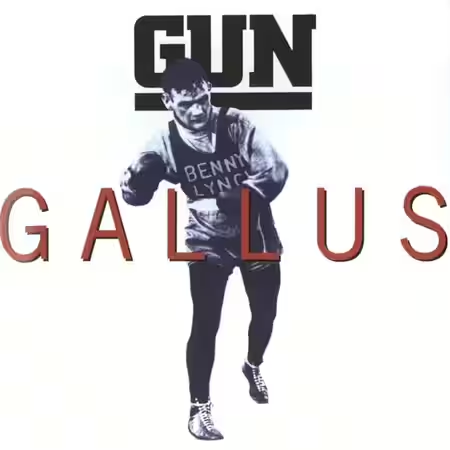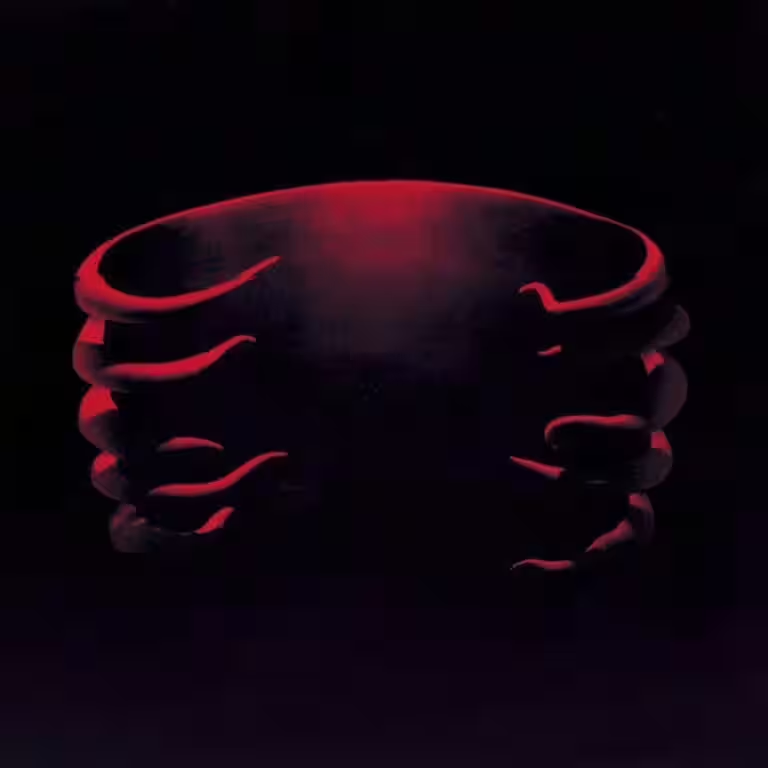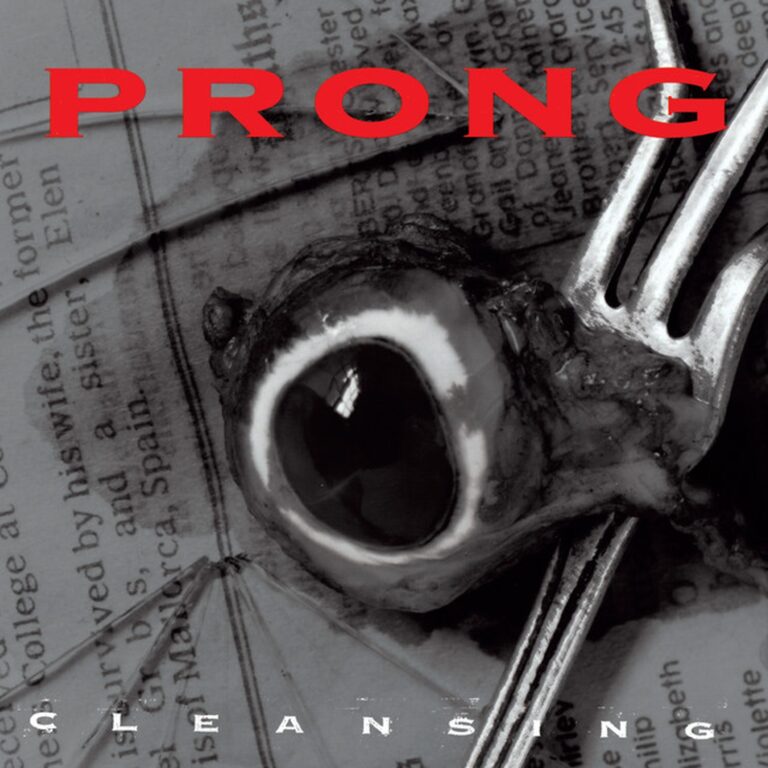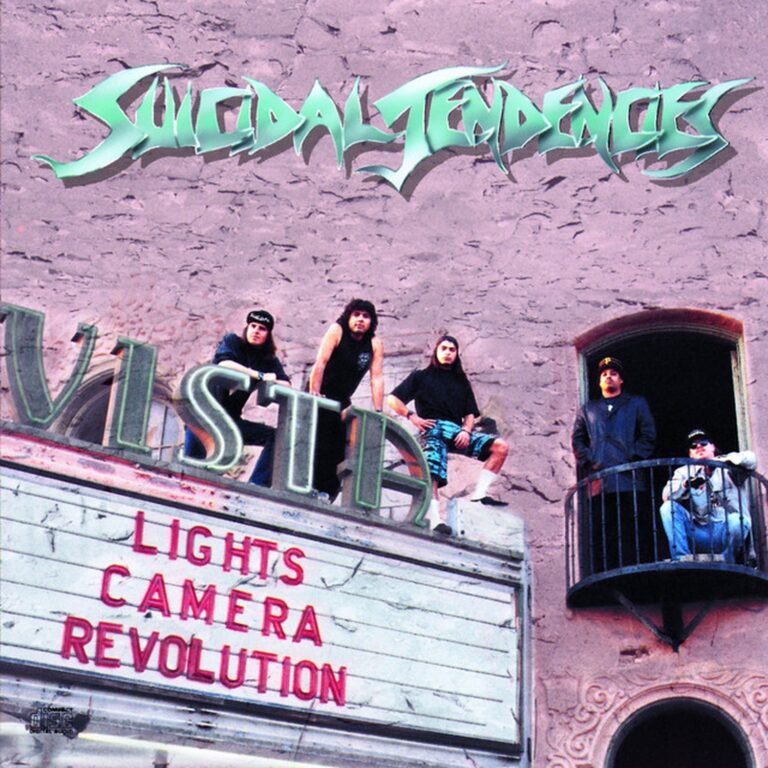
Gun’s “Gallus”: The Unfiltered Story of a Scottish Hard Rock Classic
In the early 1990s, the British rock landscape was shifting. While grunge was rumbling in Seattle and the last echoes of 80s glam were fading, a group from Glasgow delivered a record that would carve out its own space. “Gallus,” the second album by Gun, landed in 1992 with both grit and melody. Its blend of streetwise attitude, arena-ready hooks, and Scottish swagger made it a cult favourite for fans and musicians alike. Yet, “Gallus” is more than just a collection of hard rock anthems—it’s a snapshot of a band at a creative crossroads, and a document of the time when British hard rock still had something vital to say.
In this article, I’ll take you through the origins, recording, release, and legacy of “Gallus.” We’ll examine its chart performance, the meaning behind its songs, the stories from the studio, and how the album fits into both Gun’s career and the wider musical world of 1992. Along the way, you’ll find quotes from band members and peers, details about its striking cover art, and a clear-eyed look at why “Gallus” still matters. If you want the full, unvarnished history—this is it.
| Attribute | Details |
|---|---|
| Release date | 30 March 1992 |
| Album title | Gallus |
| Genre | Rock, Hard Rock |
| Total runtime | 50:16 |
| Number of tracks | 10 |
| Record label | A&M Records |
| Recording studio | Park Lane Studio, Glasgow |
| Producer(s) | Kenny MacDonald |
“Gallus” made an immediate impact, reaching number 14 on the UK Albums Chart and producing three UK charting singles. It’s a record remembered for its energy and its confidence—something that Gun themselves summed up when Mark Rankin said, “We wanted to make a record that sounded like Glasgow on a Saturday night. Loud, a bit dangerous, and full of life.” (CD sleeve notes, A&M Records, 1992)
As we move through the story of “Gallus,” you’ll discover its lasting influence, the hurdles faced in the studio, and the cultural forces that shaped its sound. This is the definitive account of Gun’s classic second album.
The Genesis of “Gallus”
To understand “Gallus,” we need to step back to the end of the 1980s. Gun had already turned heads with their debut, “Taking on the World,” released in 1989. That album produced several charting singles and gave the band a taste of mainstream success. Supporting acts like the Rolling Stones on their European tour gave Gun a front-row seat to rock’s upper echelons. At the same time, the band’s Glasgow roots kept them grounded and hungry for more.
By 1991, the band was ready to evolve. The UK was shifting musically, with the last embers of hair metal being replaced by grunge, Britpop, and a more authentic, less polished sound. Gun wanted to move beyond the radio-friendly sheen of their debut. The result was a tougher, more direct set of songs, influenced by their experiences on the road and the realities of life in Scotland. Songwriting was a group effort, but Mark Rankin and Giuliano Gizzi led the creative charge, drawing on their love of classic rock and the working-class stories of their city.
The band’s line-up for “Gallus” was stable and focused. Besides Rankin on vocals and Giuliano Gizzi on guitar, there was Alex Dickson on second guitar, Dante Gizzi on bass, and Scott Shields on drums. Guest contributions included backing vocals from Sharleen Spiteri (Texas) and Alan Thornton, both adding depth to the album’s harmonies. The group were determined to push themselves musically and personally.
Here’s a look at the core contributors:
| Band Member | Role(s) |
|---|---|
| Mark Rankin | Vocals, songwriting |
| Giuliano Gizzi | Guitar, songwriting |
| Alex Dickson | Guitar |
| Dante Gizzi | Bass |
| Scott Shields | Drums |
Financially, “Gallus” was backed by A&M Records, who had faith in the band’s ability to deliver a major statement. The budget for the album is not publicly known, but given the era and label, it would have been significant for a British rock act. Even so, the band felt pressure to deliver, knowing that a second album often determines a group’s future. The band had to balance creative ambitions with commercial expectations, but the result was a record that stayed true to their vision.
The album’s title, “Gallus,” is Glaswegian slang for “bold” or “cheeky.” It’s a word that sums up both the band’s attitude and the spirit of the city. The cover art, featuring Scottish boxing legend Benny Lynch, was chosen to reflect the underdog spirit and local pride at the heart of the album. Lynch’s story—rising from poverty to world champion—mirrored Gun’s own ambitions. The artwork was designed in-house with input from the band, ensuring authenticity and a strong visual link to Glasgow’s heritage.
Recording Process
When it came time to record, Gun wanted to capture the raw energy of their live shows. Sessions took place in late 1991 and early 1992. Recorded at Park Lane Studio in Glasgow and produced by Kenny MacDonald who continued his work with the band, having worked on both Gun’s debut and with acts like Lloyd Cole and Texas. His approach was to encourage spontaneity and push the band to deliver performances with grit and conviction.
Engineer Al Clay, known for his work with the Pixies (“Bossanova”) and Pere Ubu, handled the technical side. Clay’s background in alternative rock meant he was adept at balancing clarity with punch. The sessions were not without challenges—time pressure and the weight of expectation loomed large. Still, the band found the right chemistry. According to the 1992 CD sleeve notes, MacDonald’s hands-off style allowed Gun to find their own voice: “Kenny just let us play. He knew when to step in, but he wanted us to sound like ourselves.”
Studio gear details for “Gallus” are not documented, but we can make informed assumptions based on the era and the studios Gun were likely to use. At the time, British studios were equipped with SSL or Neve desks, Studer or Otari tape machines, and a range of classic outboard gear. Guitar tones were probably achieved with Marshall and Mesa Boogie amps, Shure SM57 and Sennheiser MD421 microphones, and effects pedals typical of the period. The rhythm section would have been tracked live, with overdubs for vocals and lead guitar. Clay’s experience with the Pixies suggests he favoured a direct, unvarnished sound.
Here’s a table of likely hardware and techniques used in the sessions:
| Equipment/Technique | Details/Assumption |
|---|---|
| Mixing Desk | SSL 4000 or Neve console (standard in major UK studios, early 90s) |
| Tape Machine | Studer A800 24-track analogue (industry standard at the time) |
| Microphones | Shure SM57, Sennheiser MD421, AKG C414 (vocals and amps) |
| Guitar Amps | Marshall JCM800, Mesa Boogie Dual Rectifier (likely choices for British rock) |
| Bass | Ampeg SVT Classic head/cab (common for punchy rock bass) |
| Drums | Ludwig or Tama kit, Zildjian cymbals (standard for rock) |
| Outboard | UREI 1176 compressor, Lexicon reverb, Eventide harmoniser |
| Recording Approach | Live rhythm section, overdubbed vocals/guitar, minimal editing |
Producer Kenny MacDonald’s work with Gun and Texas had established him as a go-to name for bands seeking authenticity. Below is a list of albums he produced (excluding “Gallus”):
| Producer | Artist | Album | Year |
|---|---|---|---|
| Kenny MacDonald | Gun | Taking on the World | 1989 |
| Kenny MacDonald | Texas | Southside | 1989 |
| Kenny MacDonald | Lloyd Cole | Don’t Get Weird on Me Babe | 1991 |
Recording “Gallus” was, by all accounts, a high-energy affair. The band were known for their sense of humour and camaraderie, but they took the music seriously. If there were disagreements, they were quickly resolved in the spirit of getting the best possible take. In the end, the sessions produced an album that felt urgent, immediate, and true to Gun’s identity.
Commercial Performance and Reception
When “Gallus” was released on 30 March 1992, the music world was in flux. Grunge was dominating headlines, but in the UK, hard rock still had a devoted following. The album debuted at number 14 on the UK Albums Chart—a strong showing that cemented Gun’s status as a major act. The lead single, “Steal Your Fire,” reached number 24 on the UK Singles Chart, while “Higher Ground” and “Welcome to the Real World” also charted at numbers 48 and 43, respectively.
Below is a table showing Gun’s studio albums, with “Gallus” highlighted:
| Album | Year | Producer |
|---|---|---|
| Taking on the World | 1989 | Kenny MacDonald |
| Gallus | 1992 | Kenny MacDonald |
| Swagger | 1994 | Chris Sheldon |
| 0141 632 6326 | 1997 | Andrew Farriss |
| Break the Silence | 2012 | Gun |
| Frantic | 2015 | Gun |
| Favourite Pleasures | 2017 | Gun |
| The Calton Songs | 2022 | Gun |
| Hombres | 2024 | Simon Bloor |
“Gallus” didn’t receive any BPI certification, but its chart success marked it as one of Gun’s most important releases. In Scotland, the album became a local favourite, inspiring a new generation of bands. While it never broke the US market, “Gallus” established Gun as a force in UK rock. The singles’ performance on the charts was a testament to the band’s growing fanbase and the appeal of their more muscular sound.
1992 was a strong year for hard rock and alternative music. Other notable albums released by similar artists include:
- Adrenalize by Def Leppard [Physical sales: 3 million]
- Fear of the Dark by Iron Maiden
- Angel Dust by Faith No More
- Countdown to Extinction by Megadeth
- Dirt by Alice in Chains
- Whipped! by Faster Pussycat
- Psalms 69 by Ministry
- Images and Words by Dream Theater
- Core by Stone Temple Pilots
- Vulgar Display of Power by Pantera
Although “Gallus” didn’t win major awards, its enduring reputation is its real accolade. In the years since, it’s been cited by musicians as an influence and by fans as a high point in early 90s British rock.
Elsewhere in heavy music during 1992, the scene was evolving. Metallica’s James Hetfield was injured in a pyrotechnics accident, Body Count’s “Cop Killer” sparked controversy, and the Freddie Mercury Tribute Concert brought together the world’s biggest rock stars. Bands like Mercyful Fate and Living Colour were undergoing line-up changes, and new acts like Stone Sour and Moonspell were forming. In short, it was a year of both upheaval and creativity, with “Gallus” standing tall among its peers.
Track Analysis
“Gallus” produced three official singles: “Steal Your Fire,” “Higher Ground,” and “Welcome to the Real World.” All three were written by Mark Rankin and Giuliano Gizzi, and each captured a different facet of the band’s sound. “Steal Your Fire” was the anthemic opener, “Higher Ground” the rousing call to arms, and “Welcome to the Real World” the album’s most reflective moment. All three singles charted in the UK, helping the album reach a wider audience.
Here’s a table of the album’s tracks, with writing credits and single status:
| Track Name | Length | Writing Credit |
|---|---|---|
| Steal Your Fire* | 4:53 | Mark Rankin, Giuliano Gizzi |
| Money To Burn | 4:44 | Mark Rankin, Giuliano Gizzi |
| Long Road | 5:06 | Mark Rankin, Giuliano Gizzi |
| Welcome To The Real World* | 5:10 | Mark Rankin, Giuliano Gizzi |
| Higher Ground* | 5:30 | Mark Rankin, Giuliano Gizzi |
| Borrowed Time | 4:34 | Mark Rankin, Giuliano Gizzi |
| Freedom | 5:05 | Mark Rankin, Giuliano Gizzi |
| Won’t Back Down | 5:43 | Mark Rankin, Giuliano Gizzi |
| Reach Out For Love | 4:19 | Mark Rankin, Giuliano Gizzi |
| Watching The World Go By | 5:07 | Mark Rankin, Giuliano Gizzi |
*Singles: “Steal Your Fire” (UK #24), “Higher Ground” (UK #48), “Welcome to the Real World” (UK #43)
Song Meaning and Lyrics
“Gallus” is an album built on strong themes—resilience, struggle, and pride. The singles in particular tell vivid stories. “Steal Your Fire” is a rallying cry against complacency, written by Mark Rankin and Giuliano Gizzi. Its lyrics—“I’m gonna steal your fire / When all these changes come”—capture the band’s hunger to break through. The song is about refusing to let the world dull your ambition. As Rankin once said, “We wanted to write something that told people to stand up for themselves.” (Genius Lyrics)
“Welcome to the Real World” reflects on the harsh realities of adulthood and the need to face life’s challenges head-on. The song’s refrain, “Welcome to the real world / Now you’re on your own,” is a nod to the transition from youthful dreams to grown-up struggles. Again, the writing partnership of Rankin and Gizzi is front and centre, blending storytelling with raw emotion.
“Higher Ground” is about perseverance and striving for something better. Lyrics like “I’m on my way to higher ground / Lies, they build you up then bring you down” show a desire to rise above setbacks and find hope. The song encourages listeners to keep pushing, no matter the obstacles. (Genius Lyrics)
Elsewhere, “Money To Burn” tackles the temptations of fame and materialism, while “Long Road” and “Borrowed Time” address the struggle to stay true in a world full of distractions. The lyrics throughout “Gallus” are direct, unpretentious, and delivered with conviction. The collaborative writing process meant each song reflected the band’s shared experiences—both the highs and the hardships.
Touring and Promotion of Gallus
Promotion for “Gallus” was extensive by early 90s standards. Gun released music videos for each single, receiving airplay on MTV Europe and British television. The band appeared on radio and in music magazines, building momentum for the album’s release. Their live shows became the main selling point—energetic, no-nonsense, and true to the record’s spirit.
The “Gallus” tour took the band across the UK and into Europe. While exact tour dates and locations are not publicly listed, memorabilia from the era, such as the 1992 Gallus Tour T-shirt, confirm that Gun played a full run of shows. Setlists included the bulk of the album alongside favourites from “Taking on the World.” The band’s reputation as a live act grew during this period, and their ability to win over audiences became one of their trademarks.
In 1992, Gun also supported Def Leppard on the UK leg of their Adrenalize World Tour. Sharing the stage with one of Britain’s biggest rock bands exposed Gun to larger audiences and helped cement their reputation. Notable events included packed gigs in Glasgow and London, with the band often described as “one of the best live acts of the year” by British music press.
Influences and Legacy
“Gallus” was shaped by a variety of influences. The band drew inspiration from classic British hard rock, the bluesy swagger of the Rolling Stones, and the melodic sensibility of Thin Lizzy. At the same time, Gun’s Glaswegian background gave their music a distinct identity—proud, tough, and unafraid to take risks. The album’s blend of big riffs, catchy choruses, and streetwise lyrics would go on to influence a new wave of British rock acts in the 90s and beyond.
Here’s a table showing key influences and those influenced by “Gallus”:
| Influences on “Gallus” | Artists Influenced by “Gallus” |
|---|---|
| Thin Lizzy | The Almighty |
| The Rolling Stones | Thunder |
| Led Zeppelin | Little Angels |
| Classic blues rock | Modern Scottish rock bands |
1992 was a year of massive change. The UK saw John Major win the general election, the Church of England voted to allow women priests, and “Black Wednesday” rocked the economy. In music, grunge and alternative rock were reshaping tastes, but “Gallus” proved that British hard rock could still make a mark. The album’s enduring legacy is seen in its influence on Scottish music and its continued popularity with fans.
Five Things about Gallus
Here are five verified facts about “Gallus” that every fan should know:
| Fact | Details |
|---|---|
| Album title meaning | “Gallus” is Glaswegian slang for bold or cheeky, reflecting the band’s attitude. |
| Cover art | Features Benny Lynch, Scottish boxing champion, symbolising underdog spirit. |
| Chart performance | Reached number 14 on the UK Albums Chart, with three singles charting in the UK Top 50. |
| Producer’s background | Kenny MacDonald also produced Texas’s debut and Lloyd Cole’s “Don’t Get Weird on Me Babe.” |
| Guest contributions | Backing vocals on the album include Sharleen Spiteri (Texas) and Alan Thornton. |
Media and Television Usage
Gun’s music has featured in several TV shows and films, but there is no evidence that songs from “Gallus” have been used in major media. The band’s best-known sync placement is “Word Up” (from “Swagger”) in “Top Gear” and “CSI: Crime Scene Investigation.” None of the tracks from “Gallus” appear in known film or television soundtracks.
Critical Reviews and Retrospectives
“Gallus” received strong reviews in the British music press on release. Critics praised its energy, songwriting, and the band’s refusal to follow trends. While not a blockbuster, it’s often cited as a high point in Gun’s discography. In later years, retrospectives have highlighted the album’s authenticity and the quality of its singles. Gun’s own reflections, as shared in interviews, suggest they consider “Gallus” a turning point—a record that set the stage for the commercial breakthrough of “Swagger.”
After Gallus
After “Gallus,” Gun’s career took several twists. Guitarist Alex Dickson and drummer Scott Shields left before the next album, “Swagger,” which became their biggest commercial success. The band’s line-up continued to evolve, with Dante Gizzi eventually taking over on vocals. Gun rebranded as G.U.N. in the late 1990s to distance themselves from the negative associations of their name. After a brief split, the band reformed in 2008 and has remained active, releasing new albums and touring widely. As of May 2025, Gun’s most recent album is “Hombres,” which reached number 1 in Scotland and number 10 in the UK.
Remasters and Reissues
There is no available information about official remasters or expanded reissues of “Gallus.” The album remains available in its original form on CD, LP, and digital platforms.
Conclusion
“Gallus” is a time capsule of early 90s British hard rock—a record with heart, grit, and a distinct sense of place. Its blend of working-class realism and anthemic choruses has ensured its place in rock history. Gun’s journey didn’t end here, but “Gallus” remains a favourite for fans who value authenticity over fashion. With Gun still active and drawing crowds in 2025, the album’s spirit lives on every time the opening chords of “Steal Your Fire” ring out.
Further Reading
Let us know in the comments what your thoughts are on Gallus by Gun. Did we miss anything? Share your experiences and join the conversation!




Great analysis of a brilliant album. My only observation is that the analysis focused more on the lyrical content than the musical. There are many highlights in this regard. My favourite is the solo on Welcome To The Real World. The beginning is great but just when you think it’s over, they go again with the wahwah. The only other example of this I can think of is Michael Schenker’s solo on Born To lose where he goes again when you think the solo is over. I digress, the whole album has brilliant moments.
Thanks so much for reading!